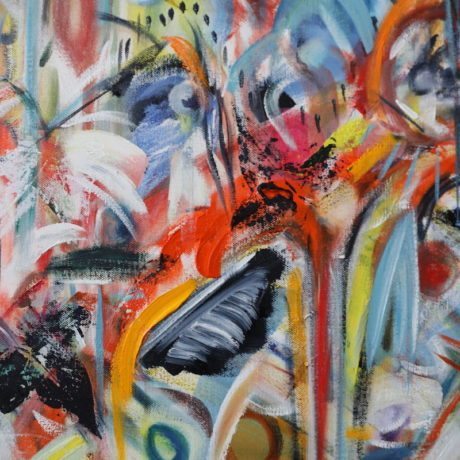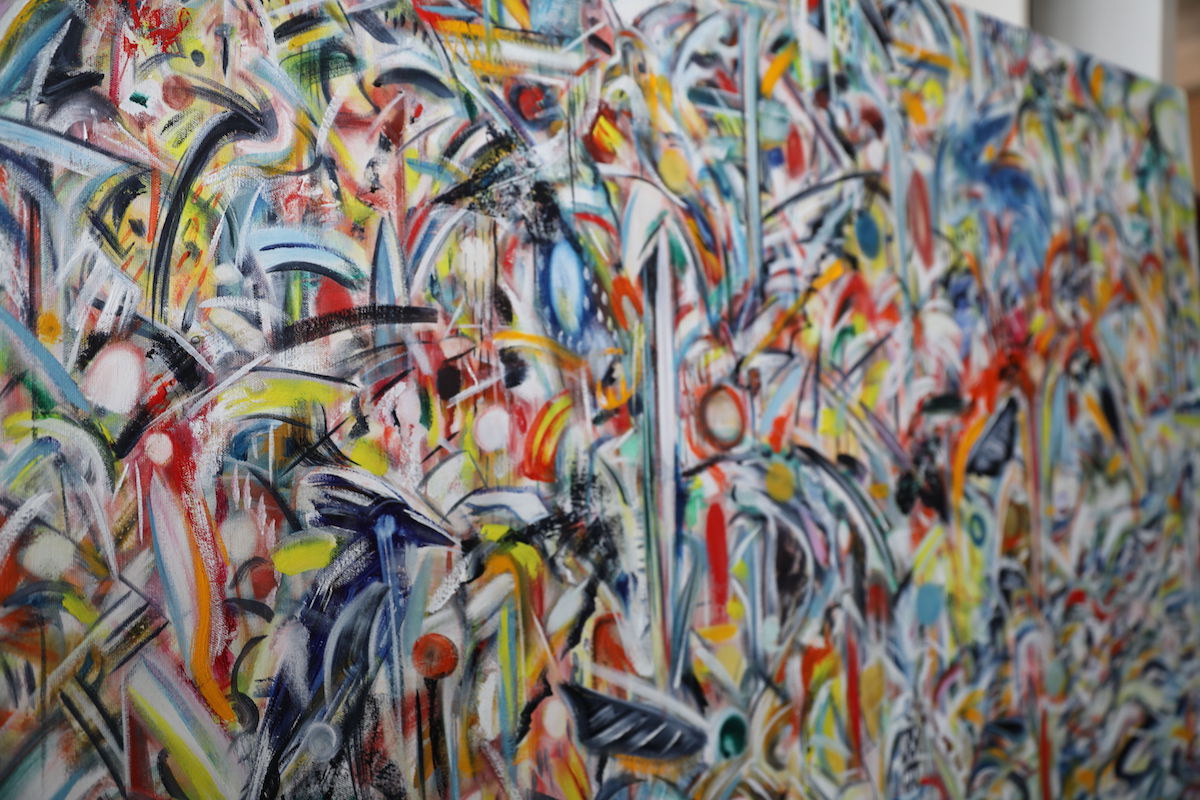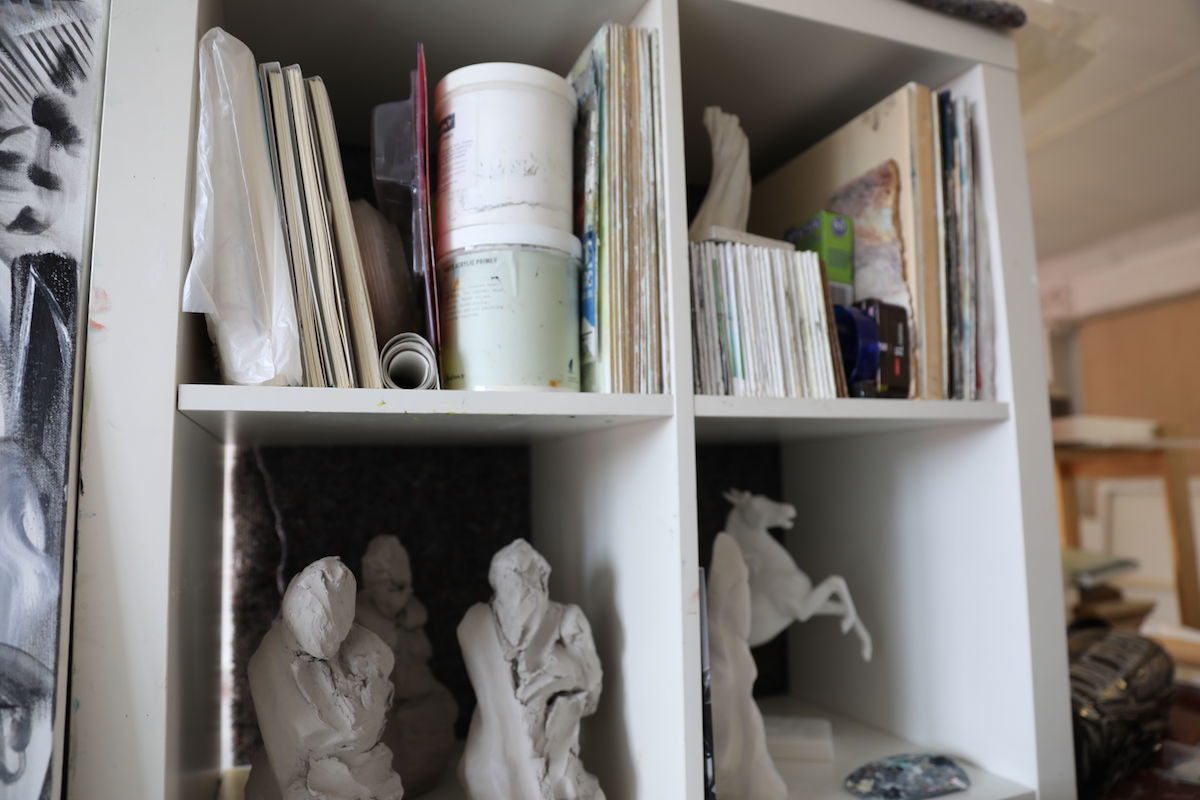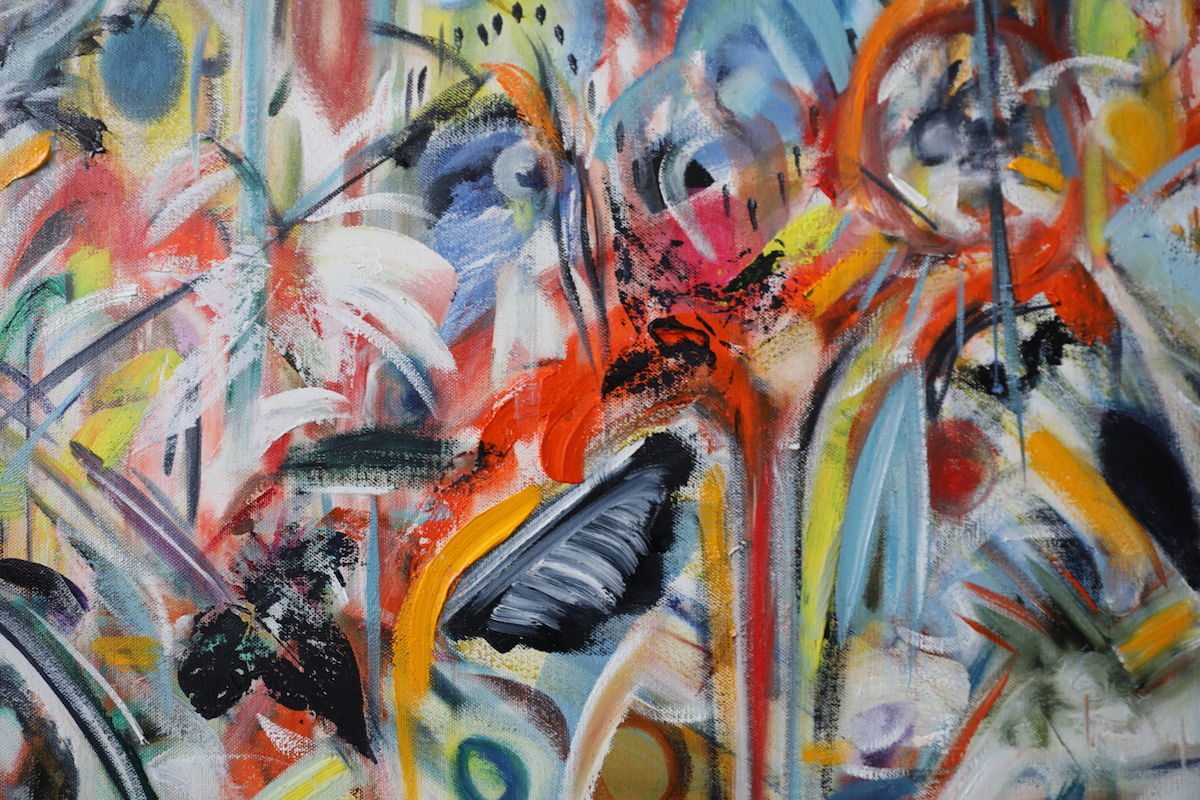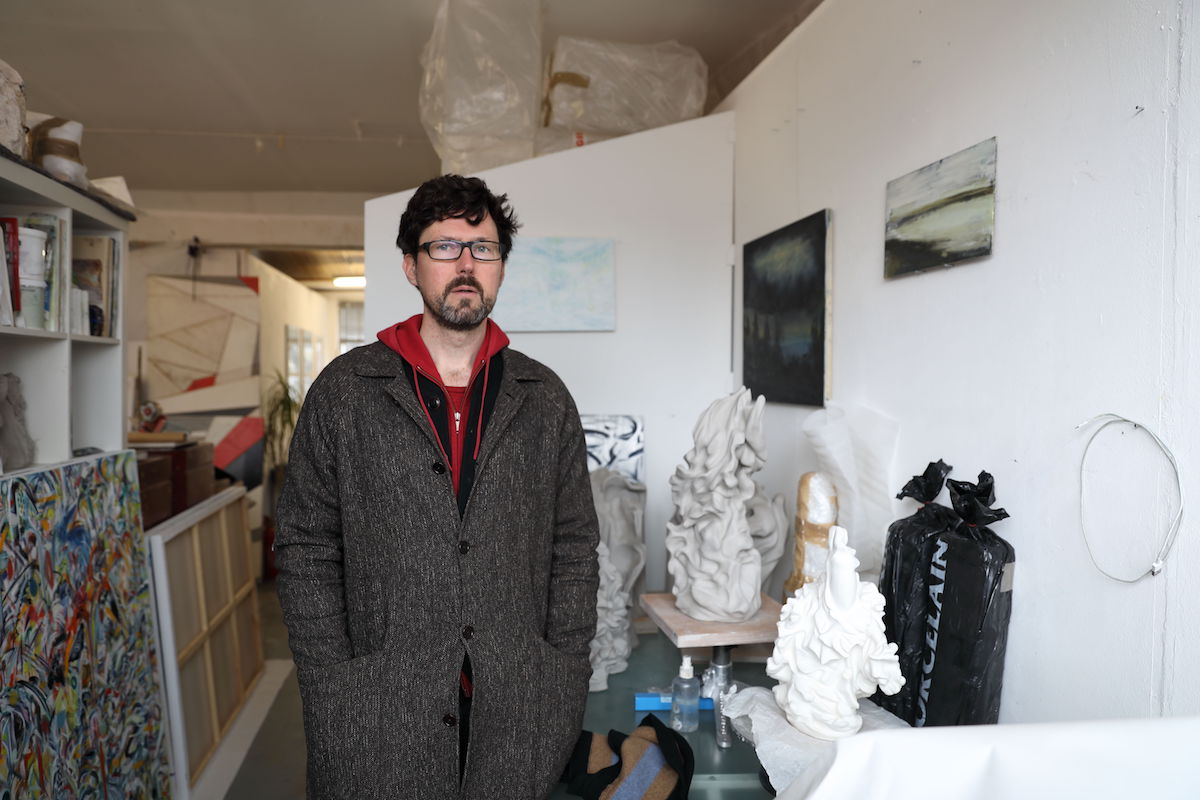 It is fascinating and somewhat challenging to walk across the boroughs of London and experience the social and economic diversification clustered within short distance. Arts communities used to be an integral part of central London, before hefty property prices precluded access for many artists to areas of the inner city, and forced them to reside in more peripheral areas. I meet artist Richard Stone at the tube station of Highbury and Islington during a freezing morning in February, and we walk to his studio within the Millers Junction studios in Dalston. The workspace is packed with a wide variety of mediums, and a careful look reveals that many pieces are still unfinished. In fact, Stone is working to complete them on time for his solo presentation at the Kristin Hjellergjerde booth for Art Brussels.
It is fascinating and somewhat challenging to walk across the boroughs of London and experience the social and economic diversification clustered within short distance. Arts communities used to be an integral part of central London, before hefty property prices precluded access for many artists to areas of the inner city, and forced them to reside in more peripheral areas. I meet artist Richard Stone at the tube station of Highbury and Islington during a freezing morning in February, and we walk to his studio within the Millers Junction studios in Dalston. The workspace is packed with a wide variety of mediums, and a careful look reveals that many pieces are still unfinished. In fact, Stone is working to complete them on time for his solo presentation at the Kristin Hjellergjerde booth for Art Brussels.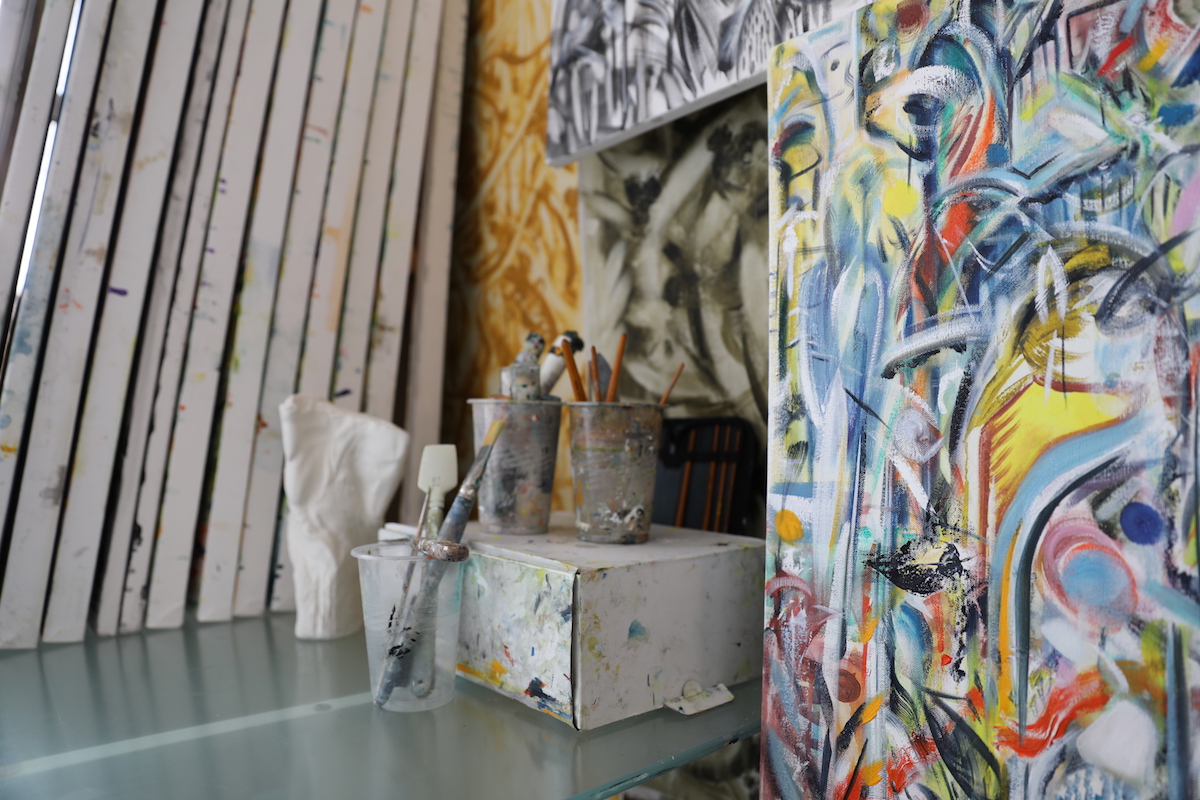
What was the defining moment that cemented your intention to become an artist?
Creativity and art were central to my childhood. In primary school, we used to make drawings with oil pastels and discuss them in class. I have vivid memories of the day when one of my drawings was framed and hung in the school hall. I felt proud of the achievement and pleased for the public display of my work. I think this was probably the initial defining moment of my art career, which gave me the drive and stimulated confidence in my art skills. Upon finishing highschool, I pursued an undergraduate degree at the Manchester School of Art, where I developed the main techniques that permeate my art. Subsequently, I studied for a postgraduate degree at the Central St Martin’s in London, where I laid the basis of critical thinking that underpins many of my artworks.
“The flow of my work is more harmonic if I feel freedom to shift attention from one piece to the other, following the feeling of the moment.”
Many of your pieces use marble that you personally select from the Carrara quarry in Italy. Do you have any special connection to Italy?
I do, and I speak some Italian! I was born and raised in Devon near the seaside with no connection to Italy. I first visited Italy in my adulthood to perfect my art, supported by a scholarship at the Fonderia Mariani that was awarded by the Royal British Society and the Brian Mercer Charitable Trust in 2014. The Fonderia Mariani is located in Pietrasanta, an Italian village on Tuscany’s coast, reminiscent of my hometown in Devon for its proximity to the sea. I lived in the small Italian town for three months, and developed a special connection with it and its culture. The scholarship was a fundamental opportunity and represented a turning point in my art career. The residency made me deeply connected with the Italian culture, stimulating a new form of creative freedom in my artistic production. Despite the time that’s passed, I remain deeply attached to Pietrasanta, and I regularly visit it to select marble for my sculptures and seek inspiration from the environment and the active local community.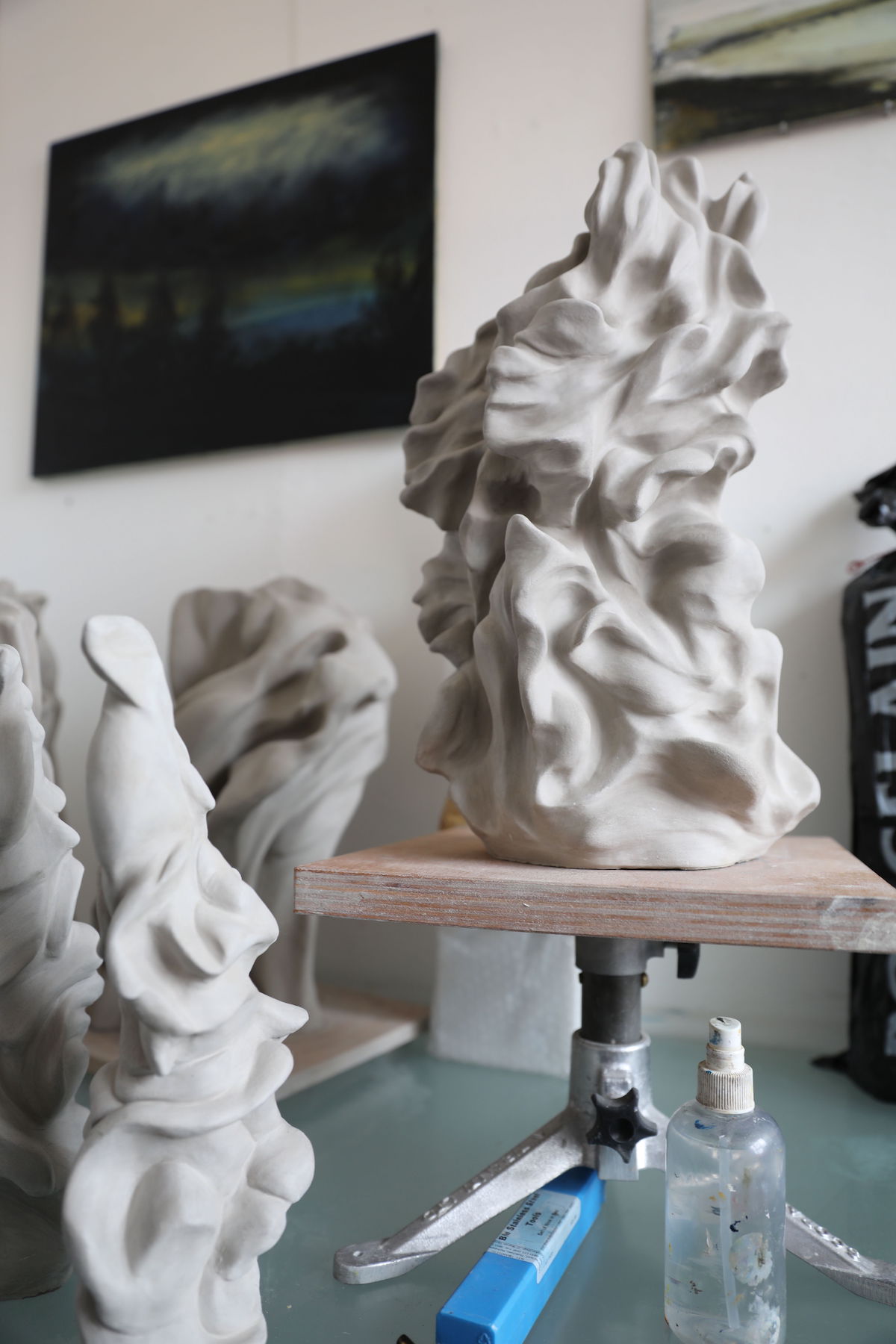
You work with different mediums at the same time and your studio is full of unfinished objects of different materials. Why do you mix materials and work on several pieces simultaneously?
Variety and multitask production are central to my art. I feel the need of moving from one medium to another to break the routine and keep creativity flowing. In the studio, I have several unfinished sculptures and paintings, and I alternate the time spent on each of them. I don’t plan beforehand how much time to spend on a single piece, nor do I have in mind a specific deadline for completion. The flow of my work is more harmonic if I feel freedom to shift attention from one piece to the other, following the feeling of the moment. The process of creating art freely in means and forms provides me with more satisfaction than achieving a planned outcome. Multitask working stimulates intrinsic synergies between different pieces.
You use an uncommon material in contemporary art: marble. Why have you chosen such a challenging medium?
It is not easy to work with marble, as any mistake takes the final outcome irreversibly away from what was originally planned. I start the work presuming that the selected piece of marble is suited for the intended work, and I trust my own instincts on carving it into the artwork I want to create. I do not make preparatory drawings to produce a sculpture. I first work with clay or porcelain to experiment with ideas and simulate movement, I then carve the marble, aware that any engrave remains unchanged. I often start a sculpture with a little model in clay because this material gives the possibility of trying out different ideas, and it provides the freedom to experiment, something that is not possible with marble.
The experience as a painter may be radically different from that of a sculptor. On the canvas you are free to change composition at any time. This is not possible with sculpting. How do you create a link and switch between painting and sculpturing?
Painting is special to me. I am a romantic person, and I find inspiration from the movement of English and German Romantic painters. I perceive my paintings as very romantic and ephemeral. It is through sharp brushstrokes and vivid colours that I translate part of the movement and energy present in my sculptures into paintings. At present, my paintings are inspired by works of artists such as Pollock and Kandinsky, and I try to break free from the category of being an English artist. I am sometimes worried about the cultural isolation as an artist, and I constantly strive to embrace and reach out to the community of European artists with their rich art history. Lately, I have also decided to experiment with a more somber tone in my paintings, switching to monochrome colours with a series that adds a splash of almost unnoticeable colour to canvas; the movements of the brushstrokes become a more prominent element of the composition.
“Nature remains central in my current production. Observing inner changes of nature still fascinates and inspires me.”
What is your major source of influence for your work at the moment?
In Devon, I used to observe and enjoy the change of seasons, which reflects the transient nature of life. I spend a lot of time outdoors, observing the changes in light. Nature has movement in itself, and incorporates changes. My sculptures and paintings resonate with these concepts. Nature remains central in my current production. Observing inner changes of nature still fascinates and inspires me. After the blossoming there is a moment when petals fall, and my art expresses my own reading of this caducous and profound moment in nature and life.
Photographs © Franco Zanetti
